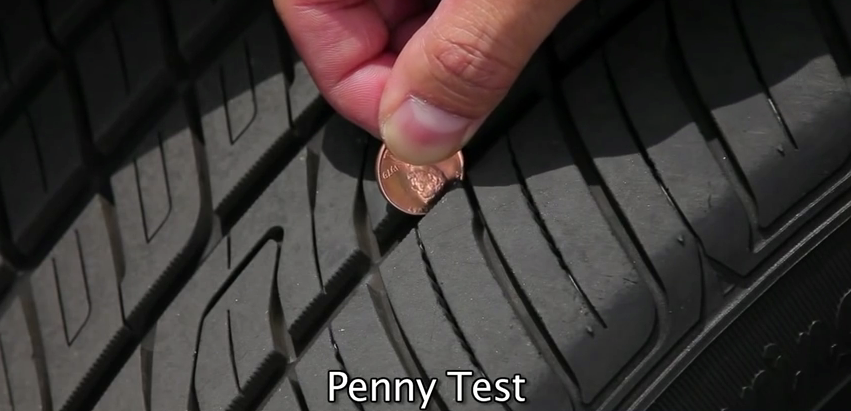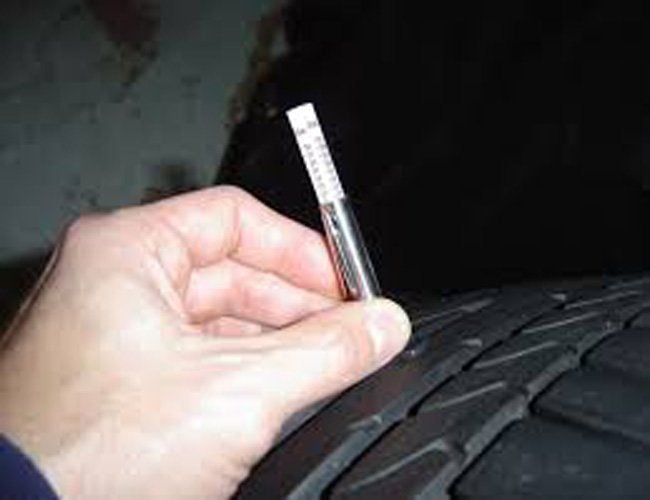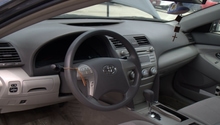Toyota Camry: How to Check Tire Tread
Thin tread on your tires is dangerous as it can lead to poor traction and even a possible blow out. Here's how to check your tread, so you know when it's time to replace your tires.
This article applies to the Toyota Camry 4th, 5th, and 6th generation (1997-2011).
Checking your tire tread is an easy task that doesn't require any special knowledge or tools, and it is a very important task. Worn tires can not only lead to poor handling and potential flats, but they also harm fuel economy, braking performance, and ride quality. Checking tread depth on all four tires can also alert you of uneven tire wear, which can then signal an issue with alignment or other worn parts. All you really need to check the tire tread depth is a penny, literally.

Materials Needed
- Tire tread depth gauge (optional)
- Penny or quarter
- Tire pressure gauge
- Air compressor (optional)
Step 1 – Check the tire pressure
The key to an accurate tire depth reading is to first ensure that your tires are properly inflated. Use a tire pressure gauge to check each tire and ensure it is inflated within the manufacturer's specs, which you can find on the sidewall of the tire itself. This information can also be found inside of the door panel on a placard if you are running factory tires. If necessary, add or remove air to get the tire within the recommended psi range.

(Related Article: How to Change a Tire and Check Tire Pressure - CamryForums.com)
Step 2 – Check the tread depth
Using a Coin
Place a penny in between the grooves of the tire tread with Lincoln's head in the upside down position and facing you. If the depth of the tire tread is at the same level as the top of Lincoln's head, your tread is at or less than 2/32" and the tires should be replaced. The same test can also be completed with a quarter; if the tread touches Washington's head, you have around 4/32" of tread depth remaining.

Using a Tread Depth Gauge
To ensure accurate readings, make sure the gauge is calibrated by pressing it against a flat surface; it should read zero. Place the gauge on the tire, in between the grooves of the tread, and read the depth measurement. Even though most states legally require a tire to have at least 1/16" of tread depth, you should consider replacing the tire if it has 2/32" of depth, or less.

Featured Video: How to Check Tire Tread
Related Discussion
- Excessive Tire Wear - CamryForums.com






